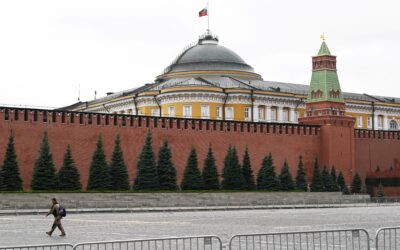
Russia’s Response to U.S. Aid: Shrugs, Disinformation and Warnings of Nuclear War
SUBSCRIBER+ EXCLUSIVE REPORTING — Russia’s reaction to the new infusion of U.S. aid for Ukraine has ranged from shrugs to fury, from warnings of nuclear […] More
Jean-Thomas Nicole is a Senior Policy Analyst at the National Search and Rescue Secretariat, Public Safety Canada.
Renéo Lukic is a full professor of international relations in the Department of History at Laval University (Quebec, Canada).
OPINION — For the second time in less than eight years, the autocratic regime of Vladimir Putin, on February 24, 2022, launched another premeditated, violent and destructive attack against Ukraine. Let us remember that the first aggression against Ukraine, in 2014, resulted in the annexation of the Crimean Peninsula.
The amputation of Crimea, and its incorporation into the Russian state, openly violated the Budapest Memorandum signed in 1994 in Hungary during the OSCE (Organization for Security and Cooperation in Europe) conference. This politico-legal agreement, signed by Ukraine, Russia, Great Britain, and the United States and also supported by France and China, that is to say in short by all the permanent members of the Council UN Security, was to guarantee the security and territorial integrity of Ukraine. In return, Ukraine had agreed to surrender the nuclear weapons that were on its territory following the disintegration of the Soviet Union. Note that overnight, after the end of the Soviet Union, Ukraine had become for a time the third nuclear power in the world.
By renouncing nuclear weapons, an act much appreciated by Russia at the time and by the international community, Ukraine had also acceded, at the same time, to the Treaty of Non-Proliferation of Nuclear Weapons. It goes without saying that Russia would never have dared to launch a war against Ukraine if Kiev had kept the nuclear weapons inherited from the Soviet Union. It is therefore understandable that Ukraine feels betrayed, not only by Russia, but also by China, an ally of Russia in the present war that began on February 24, 2022.
In doing so, President Putin wishes to recreate from scratch a Eurasian, Great Russian empire encompassing the three historic Slavic states (Russia, Belarus and Ukraine) while keeping the former republics of the Soviet Union, excluding the Baltic States, which are now full members of the European Union and the North Atlantic Treaty Organization (NATO).
After weeks of fierce fighting, with no clear end in sight, it therefore appears that this second aggression aims to conquer the entire territory of the Ukrainian State. The political objective of Putin’s autocratic regime is to break up the Ukrainian state and replace its democratic government, which emerged from free elections, with a puppet government controlled entirely by the Russian invader.
To achieve this goal, conceived by Putin himself, the preferred means is total war against Ukraine. By deciding to conquer Ukraine by military force, in flagrant violation of international law, President Putin has thereby put an end to a European international order established after the disintegration of the Soviet Union in 1991. Indeed, the war in Ukraine marks the end of the process of European unification under the aegis of the European Union and the North Atlantic Treaty Organization (NATO).
The Cipher Brief hosts expert-level briefings on national security issues for Subscriber+Members that help provide context around today’s national security issues and what they mean for business. Upgrade your status to Subscriber+ today.
This war also dangerously weakens the thirty years of prosperity of the states of Central and Eastern Europe. In short, we are currently witnessing the return of the bipolar logic of the Cold War (1947-1989) and its ideological iron curtain, with all the dangers that this implies for the security of the Euro-Atlantic community.
It appears that NATO, a multinational military security organization made up of 30 sovereign states, probably did not anticipate the return of major warfare in Europe as we have seen develop since the end of February. After the outbreak of this second war against Ukraine, the surprise and shock caused by the invasion of Russian tanks was total and devastating.
It also appears retroactively that NATO did not fully understand the reasons for the presence of the 40,000 Russian soldiers amassed on the Ukrainian border in 2021. However, it is now recognized that the maneuvers of the Russian army in 2021 were clearly a dress rehearsal for the invasion in 2022. Until then, it must be admitted, the response of the West to a belligerent Russian foreign policy, announced in 2007 at the Munich conference by President Putin himself, had unfortunately remained unanswered… almost encouraging, in a way implicitly, the territorial conquests of Russia.
Thus, in 2008, at the NATO summit in Bucharest, Romania, NATO refused to specify a timetable for the accession of Georgia and Ukraine. Putin interpreted this decision as a green light to attack Georgia in the summer of 2008. The consequences of the war in Georgia led to the amputation of 20% of Georgian territory and the creation of two states, Abkhazia and South Ossetia, two protectorates of Russia.
In 2014, Russia boldly went a step further by annexing Crimea and fomented insurrection in the Donbass region by creating two protectorates, the self-proclaimed republics of Donetsk and Luhansk.
Observing the diplomatic reactions of the Euro-Atlantic community to the Russian territorial conquests from 2008 to 2014 we see that the West has followed a policy of cascading appeasement with regard to Russia. This is a policy similar to that led by Neville Chamberlain, in 1938, against Nazi Germany which resulted in the Second World War…
In the same way, during our era, each retreat of the West has encouraged Putin to undertake new territorial conquests at the expense of his neighbors, the former republics of the Soviet Union. In this sense, the sanctions imposed by the Euro-Atlantic community after the annexation of Crimea in 2014 proved insufficient and have had no deterrent effect.
On the other hand, the reaction of the West after the so-called special military operation launched against Ukraine in 2022, by the autocrat of the Kremlin, is without comparison with that undertaken in 2014. And that is right and good.
Let us repeat at the outset, as Ukraine resists heroically, despite the deaths, the destruction and the nuclear threat of the dictator in Moscow: the response of the Euro-Atlantic community, encouraged by the resistance of the Ukrainian people, could set back the Russian invasion for Ukraine and neighboring states, Moldova, Georgia or even Finland. This is what we want and why liberal democracies have mobilized like never before in Europe and around the world.
Sharing informed opinions is important. Opinion pieces represent the diverse views of The Cipher Brief audience and do not represent views of The Cipher Brief.
Read A Picture of Putin’s Nuclear Option from Senior National Security Columnist Walter Pincus only in The Cipher Brief
Related Articles

SUBSCRIBER+ EXCLUSIVE REPORTING — Russia’s reaction to the new infusion of U.S. aid for Ukraine has ranged from shrugs to fury, from warnings of nuclear […] More
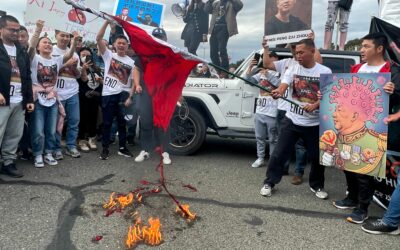
SUBSCRIBER+ EXCLUSIVE REPORTING — When Chinese President Xi Jinping came to San Francisco last November to meet with President Joe Biden, Chinese pro-democracy activists in […] More
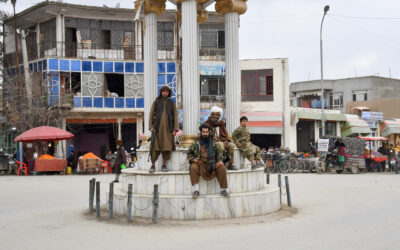
SUBSCRIBER+EXCLUSIVE EXPERT PERSPECTIVE — More than two years after its withdrawal from Afghanistan, the U.S. still does not have a clear way forward in the […] More
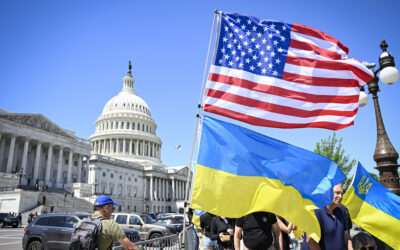
SUBSCRIBER+ EXCLUSIVE REPORTING — Ukrainians greeted Saturday’s long-awaited House passage of $60.8 billion in aid with justifiable jubilation. For months, their soldiers, civilians, and political […] More
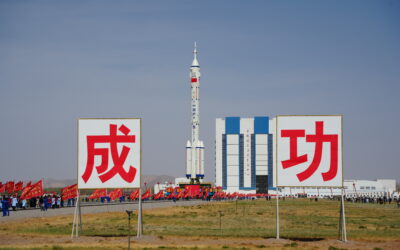
SUBSCRIBER+ EXCLUSIVE REPORTING — A race for control of space is underway, and just as on earth, the U.S. and China are the top competitors. […] More

SUBSCRIBER+ EXCLUSIVE REPORTING — For nearly a week, the Middle East and much of the world were on a knife’s edge, waiting for a promised […] More
Search